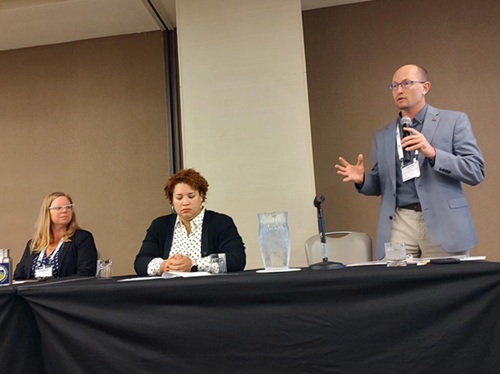A session held at the American Association of State Highway and Transportation Officials 2025 Safety Summit and Peer Exchange in New Orleans examined ways state departments of transportation can improve how they communicate and collaborate with a variety of local and regional agencies, industries, and other groups to make safety improvements.
[Above photo by AASHTO]
“It is all about helping all of us make better decisions about highway safety,” explained the session’s moderator, Calvin Reed, secretary of the Kansas Department of Transportation. “When we talk about implementing the ‘safe system’ approach, it is important to recognize that the responsibilities are shared not just state DOTs but users and advocates. Communicating and collaborating with various groups makes it a community effort.”
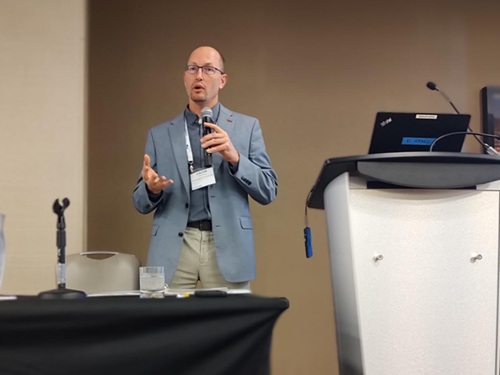
He pointed to his state’s “Drive to Zero” collaborative coalition that includes representatives from various state and local agencies, advocacy groups, nonprofits, private sector companies, law enforcement personnel, and first responders as an example.
“It is a group numbering in the hundreds, and they meet quarterly to focus on various aspects of our respective roles to help drive fatalities down on our roadways,” Reed noted. “What is unique about Kansas is that we incorporate all of these groups into our highway safety manual – making it much broader than just state DOT policy. And the proof is in the pudding, as we have seen four consecutive years of decreases in highway fatalities – reaching a record low in 2024.”
He also pointed to the $10 billion, decade-long Eisenhower Legacy Transportation or IKE infrastructure funding program passed by the Kansas legislature and signed into law by Governor Laura Kelly (D) in 2020 as another example of that collaborative mindset.
“Every two years, we are required to go out and conduct ‘local consults’ to get local and regional perspectives on state transportation investments,” Reed noted. “We get great feedback – and it shows how much people are engaged in transportation in Kansas. What makes things successful is when we get that local government involvement and public buy-in.”
That collaborative approach is also key when working within the nexus of a state’s many agencies, added Amy Whitfield, special director for the New Mexico Department of Transportation.
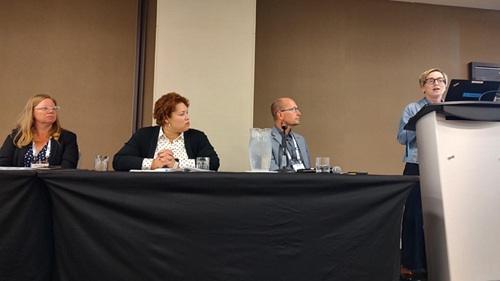
“It’s about talking about things that affect multiple state agencies – looking at the impact one policy change can have on multiple state agencies and, conversely, how multiple state agencies can work together to get the legislature to support a policy,” she said as part of the session’s panel. “Cross-agency resource mapping can also help identify and fill funding gaps, especially in rural areas – and New Mexico is a very rural state.”
Shannon Glendenning, traffic safety division director for NMDOT, added that collaboration is especially key when it comes to traffic safety issues.
“Preventing dangerous driving means changing attitudes and actions – and to make such changes means we have to engage in culturally-relevant storytelling,” she said. “We’re finding that storytelling changes culture, that social norming campaigns work, but we have to work with the right groups to make that happen.”
For example, Glendenning pointed to her agency’s “ENDWI” campaign that relied on New Mexican residents from specific groups – young men and women, for example – to spread NMDOT’s safety messages more effectively.
“We are also using surveys to see if we are reaching the right audience; if it is having an impact,” she noted. “We’re trying to get a better understanding of how this information actually influences someone’s behavior.”
Michelle May, highway safety program manager for the Ohio Department of Transportation, added that collaboration is also about using traditional partnerships in “nontraditional” ways.
For example, she referenced her agency’s partnership with Ohio State University over the last eight years with the school’s department of psychology; not the engineering department, like many may think.
“We are using them to help us conduct, interpret, and summarize traffic safety research – and in turn sharpen traffic safety campaigns around the state, sharing their expertise with our local partners,” May explained. “It’s an ‘on-call service’ so we can get more rapid connections.”
For example, she said the agency built legislative support for the passage of a new handsfree driving law in 2023; support based in part on survey work helmed by Ohio State for Ohio DOT.
“They helped largely by documenting high support among law enforcement and prosecutors for the new law,” Mays noted.
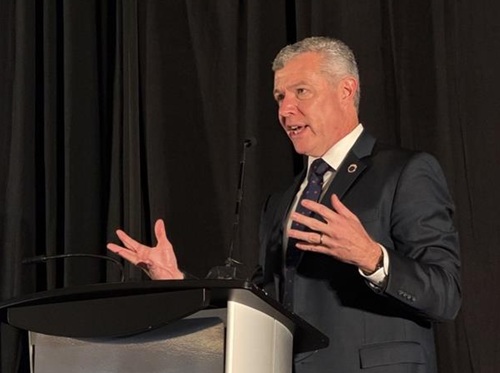 Top Stories
Top Stories
Collaboration Touted at AASHTO’s Third Safety Summit
October 31, 2025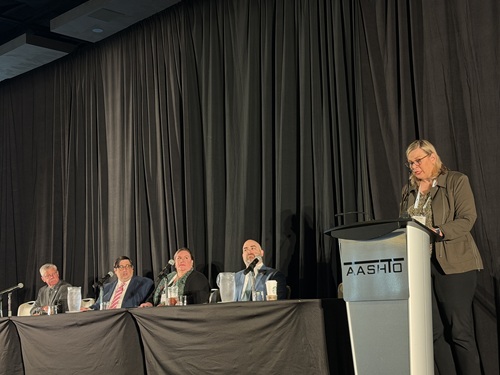 Top Stories
Top Stories
